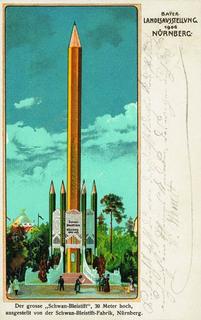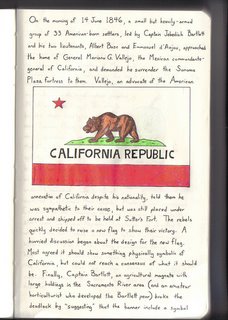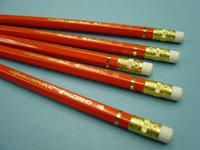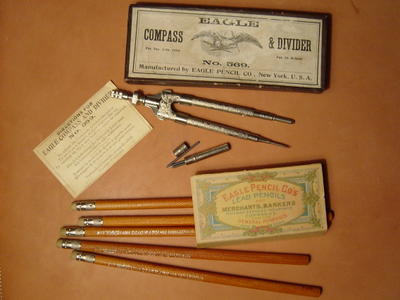
Those of us in the pencil industry are all quite proud of the origins and traditions of our companies. Many of us like to tell our historical tale of product innovation and organizational development. A number of us even claim to have produced the world’s “___est” pencil. Pick your adjective.
But where does one go for a good insight into the overall industry history?Henry Petroski’s “The Pencil: A History of Design and Circumstance” is considered to be the most definitive history of the development of our industry. Many insiders however view a few facts pertaining to their own company history as not fully accurate. Some may even contest some of Petroski’s statements regarding which company first achieved various technical developments.To be sure there is plenty of interesting history in our industry.
Given the age of many of the companies even some of the factories may be considered museums or museum like. So here are a few historical references for your perusal.
Perhaps the most elaborate company historical presentation in our industry, the Cumberland Pencil Museum established by The Cumberland Pencil Company sits next door to their manufacturing facility located in Keswick, Cumbria, England. Here the Cumberland Graphite story is told beginning with the discovery and development of the famous Borrowdale graphite mines. Of course one of the museums key features is their “Worlds Longest Pencil” unveiled in 2001 at 25 feet 11-1/2 inches.
Many companies in the industry have a tale of growth characterized by merger and acquisition of other pencil manufacturers as well as of other writing instruments and art supply businesses in order to expand the product range. One of the leading examples of such development is Dixon Ticonderoga Company which a few years back published its history entitled “The Best of It’s Kind”. During a visit to their Versailles, MO facility some years back I saw their project to produce another world’s “___est” pencil, a giant Ticonderoga. We even supplied Dixon with super-sized Incense-cedar timbers for this effort, though I don’t have the final pencil dimensions available.
Among US pencil manufacturers just two company’s with production history pre-dating 1920 still trace current ownership to descendants of company founders. The Musgrave Pencil Company history typifies the early development and concentration of pencil manufacturers in middle Tennessee. Here much of the US industry located in order to attain supplies of Eastern Red Cedar which was the preferred pencil wood early in the 20th century. A number of US factories were originally established by immigrants from the German pencil industry culuster around Nuremburg. General Pencil Company reflects the last remaining US pencil producer with current ownership still related to the original German founder. To my knowledge neither of these companies has ever attempted to produce a Worlds “___est” pencil, though they both know how to make very good pencils.
Faber-Castell has a significant history in the pencil industry and has several entries in the competition for the Worlds “___est” pencil. A Grip 2001 measuring 12 meters is displayed at the company’s headquarters in Stein, Germany. Not to be outdone Faber-Castell’s Malaysian subsidiary has the Guinness Book of World Records certification achieved in Novemer 2002 for the World’s “Longest” Pencil at 19.75 meters.
Schwan Stabilo Group’s 150 Years of History represents perhaps one of the more interesting web based company history presentations for its multidimensional timeline covering History, People, Writing Products and Cosmetic Products. And of course, you guessed it, Schwan claims to have produced the Worlds “Tallest” Pencil coming in at 30 meters for the 1906 Bavarian State Exhibition (shown above). How this one got overlooked by all the recent pretenders is a mystery, though it’s uncertain if this monster was truly capable of writing with a graphite core as the others all have. So perhaps this record needs to have an asterisk attached.
Finally, we have our own historical archives and historical display at California Cedar Products Company which provides much detail on our pencil slat history. While we do claim to be the worlds leading pencil slat manufacturer and we do make a few pencils, we have never attempted to produce our own World’s “___est” pencil. I’m guessing a little more research may be in order before ever attempting such a feat.
 I’ve been travelling overseas to Frankfurt Paperworld show and now to our pencil factory in Thailand. Too tied up to get down to the detail in writing Part 3 on making a Pencil Revolutionary out of an Environmentalist. There’s also some interesting new pencil items I plan to write about from the Paperworld show. All this will need to wait till I get back home though.
I’ve been travelling overseas to Frankfurt Paperworld show and now to our pencil factory in Thailand. Too tied up to get down to the detail in writing Part 3 on making a Pencil Revolutionary out of an Environmentalist. There’s also some interesting new pencil items I plan to write about from the Paperworld show. All this will need to wait till I get back home though. Nita’s talent is visible on her InkTracks blog where she drew this Moleskine using her Palomino Pencils. We’re glad she digressed from her wonderful color efforts to work in graphite for a few sketches last month. We’d love to see more.
Nita’s talent is visible on her InkTracks blog where she drew this Moleskine using her Palomino Pencils. We’re glad she digressed from her wonderful color efforts to work in graphite for a few sketches last month. We’d love to see more. revolutionaries remains an inspiration for us here at California Republic Stationers. You may have already noticed that we’ve also encorporated this spirit into our Golden Bear brand which we think works out much better than the Golden Pear would have. Not sure the “Pear revolution” would have lasted even a week back in 1846.
revolutionaries remains an inspiration for us here at California Republic Stationers. You may have already noticed that we’ve also encorporated this spirit into our Golden Bear brand which we think works out much better than the Golden Pear would have. Not sure the “Pear revolution” would have lasted even a week back in 1846.








